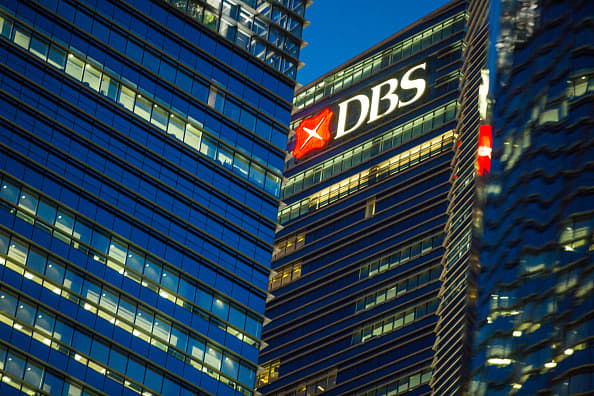
DBS Group Holdings in the central business district of Singapore.
Nicky Loh | Bloomberg | Getty Images
The latest sell-off in U.S. stocks is “a nice, healthy correction” after climbing sharply in the last few months, according to the chief investment officer of Singaporean bank DBS.
Tech stocks — the market leaders since late March — led the decline overnight, with the Nasdaq Composite falling by 5% by the session close. The S&P 500 and Dow Jones Industrial Average dropped 3.5% and 2.8%, respectively.
“We think it’s a healthy correction in an uptrend. After all, Nasdaq has gone up 30% year-to-date and from the lows in March, it has gone up 70% so there will be bouts of correction,” Hou Wey Fook, CIO at DBS, told CNBC’s “Squawk Box Asia” on Friday.
“I think this is a nice, healthy correction.”
Hou said it’s possible stock prices could decline further, but there are also several factors that could support markets going forward.
He explained that many investors still have cash that “has to be put to worked,” and in an environment with low interest rates and low yields, stocks remain the “asset class of choice.”
“Therefore, in any correction, we do see fund flows back into the equity market,” he said.
In addition, the U.S. Federal Reserve’s new approach to inflation is a “game-changer” that has not been fully reflected in markets, Hou said. He said the Fed’s move could lift gold prices even more, especially when the U.S. dollar is weakening.
Investing ideas
Despite the sell-off in tech stocks, the CIO said he advises clients to have continued exposure to the sector. That’s because the coronavirus pandemic has accelerated many trends, such as the adoption of technology and e-commerce, he said.
Hou said his “barbell” strategy remains relevant. A barbell concept is typically an investment strategy that seeks to balance risk and reward by investing in two extremes of high risk and no risk assets, and avoiding middle-of-the-road choices.
Hou explained that in his case, the strategy involves having outsized exposure to two areas:
- Secular growth trends, which means investing in sectors such as e-commerce, cloud computing and alternative meats;
- Income-generating assets, including corporate bonds and Singapore-listed real estate investment trusts.
He added that he also likes gold as a way to diversify and add resilience to the portfolio. Overall, Hou said he advises clients to build a portfolio made up of around 40% of secular growth stocks, 40% to 50% of income-generating assets and 10% in alternative assets which are primarily gold.
“We’re in a world of ultra-low interest rates, so the income-generating part of it will give you higher yield than that you can get from deposits. Together with that kind of construct, we think we should be able to do well irrespective of the cycles that we’re in,” he said.
— CNBC’s Fred Imbert and Thomas Franck contributed to this report.




